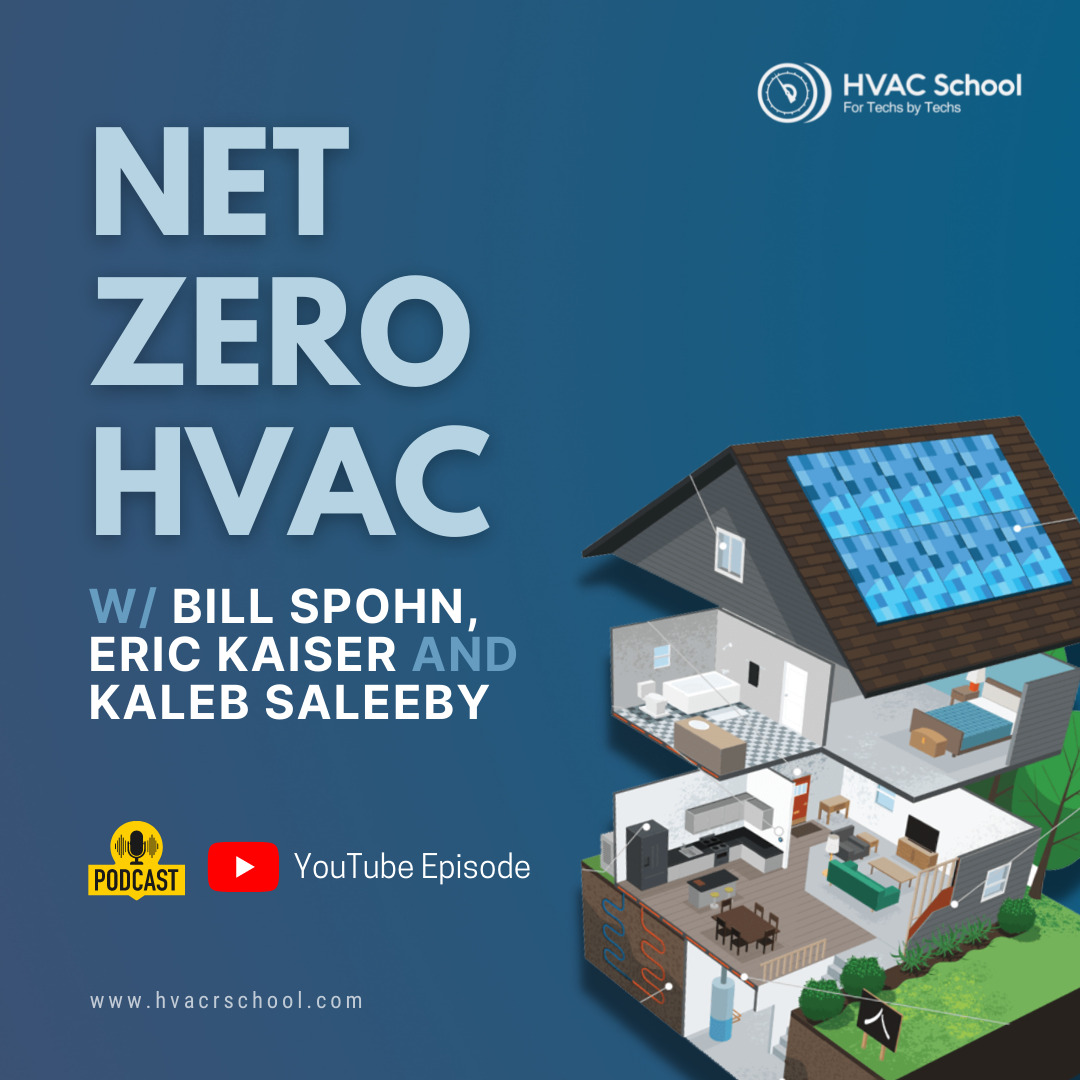NetZero HVAC LIVE w/ Bill Spohn
February 1, 2022


NetZero HVAC is all about designing a system that works very efficiently and correctly in a tight home. NetZero homes use natural heating (from radiant heat), energy generation, and ventilation to generate as much or MORE energy than what would be consumed (minimizing utility bills as much as possible while maintaining high comfort standards).
Many of these homes use solar technology to provide electricity, and a battery bridges the gap. These homes do NOT use natural gas on the property; they are all electric. In many cases, these homes are manufactured with a PHPP or personal home planning package. These PHPPs come with pick lists that allow you to choose materials that work for your home’s ventilation needs and tradeoffs in design elements. Passive houses in multi-family modular buildings tend to be quite practical and relatively common.
Building design software is very important for NetZero homes, as is precision in construction and reliable transportation. The construction needs to match the dimensions and specs of the drawings, especially in modular homes with factory-built units. In some cases, physical models need to be made to see how everything will work together as well. Manual J is important as are the more general estimates provided by the PHPP.
Working with contractors and understanding building science are two of the most important mental characteristics that a person needs to build and design NetZero homes successfully. As the industry stands right now, more people need to communicate about NetZero HVAC before we can expect widespread adoption and knowledge of it.
Bill Spohn also talks about the pricing and timelines of building NetZero HVAC homes. In his case, he used a highly customized design, but the builders managed to put it all together within a month (October 2019). Some extra building considerations included vinyl siding for the outside of the home and foam insulation thickness. The foundation was factory-made (with foam insulation) by a company that used to do parking lot decking.
Bill’s home uses electricity, including backup heat, but he intentionally leaves it off; backup heat is quite inefficient, and he opts to go without it in most cases. (Not to mention, the heating system can typically heat the home well enough without the backup heat.) The HVAC includes a high-pressure air handler and has zones. Of course, it wasn’t perfect; the heat load wasn’t correctly calculated for the main space, and the system tripped out on high head pressure while the other zones were closed.
The SpohnHome also uses data logging to keep track of conditions that may impact safety and comfort, especially outdoor temperature and humidity as well as indoor CO2 and VOCs. The monitoring systems for HVAC, IAQ, and hot water don’t consume much energy at all.
When it comes to sizing, Bill’s 2-ton inverter system manages to heat and cool his 4,400 sq. feet quite easily. So, his home and HVAC system combination proves that rules of thumb aren’t always 100% reliable for all situations.
Bill was fortunate enough to tour the factory and become acquainted with materials suppliers and builders along the way. Overall, he is generally happy with his home, but he has had some issues with radon. He also had to choose between passive house triple-pane windows and double-pane windows as he considered air infiltration/exfiltration and radiant gains.
Overall, NetZero HVAC homes require a rigorous understanding of airtightness, solar gains, and ventilation, as those have major impacts on building performance.
You can learn more by listening to Bill’s podcast, Building HVAC Science. You can subscribe to the podcast on any podcast app of your choice or get an overview at https://buildinghvacscience.libsyn.com/.
Comments
To leave a comment, you need to log in.
Log In